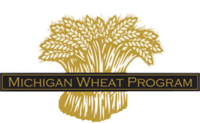
Lansing, Mich. (July 17, 2017) – As the state’s wheat farmers take combines into their fields to harvest the golden crop, Governor Rick Snyder proclaims that July is Wheat Month in Michigan.
In making the proclamation, the Governor recognized that “Michigan-grown soft winter red and white wheat have a bright future as an ingredient in many food products including breakfast cereal and pastries, cakes and baking mixes, cookies, pretzels, pies, wheat berries (kernels) and crackers, and is a preferred ingredient by many commercial food manufacturers.”
Snyder said he joined with the Michigan Wheat Program to celebrate the importance of Michigan’s wheat farmers.
He also commended the state’s strong wheat milling and processing industry by thanking “the Michigan State Millers Association and all of its members for their support and collaboration with the 8,000 wheat farmers in Michigan.”
The state’s wheat farmers have begun their annual harvest. The combine separates the golden grain into straw for animal bedding and other uses and wheat kernels that are milled for human consumption. Harvest began around July 4th in southern Michigan, and progresses northward.
Quick facts about Michigan wheat:
- About 8,000 Michigan farmers planted 480,000 acres of wheat last fall, of which 430,000 acres will be harvested.
- Wheat is grown on 8,000 farms in the Upper and Lower Peninsulas, in at least 50 of Michigan’s 83 counties.
- Michigan farmers will combine about 34 million bushels of wheat by the end of harvest, according to the US Department of Agriculture.
- The average Michigan wheat farmer produces 89 bushels to the acre, compared with 55 bushels per acre in other growing regions around the nation.
- 2016 was Michigan’s highest-recorded yield with farmers growing 89 bushels of wheat per acre. Yield will be lower this year in Michigan and is projected to be 84 bushels per acre. Across the nation the average yield is also projected to be down to 49 bushels per acre.
- Once harvested, wheat travels either to a local elevator or miller or is stored on-farm. It is purchased during the rest of the year by elevators, processors, millers, distillers and brewers. Almost all Michigan wheat is processed into food products within the great lakes region and becomes cookies, crackers, soup thickener, pastries, cereal and pretzels.
- Farmers will plant wheat again in the Fall, as it is a grass crop that overwinters in the field. It will start growing again in the spring when weather breaks. Wheat helps reduce erosion because it provides ground cover during the high-rain periods in fall and early spring. Wheat also enriches soil by capturing nitrogen and adding organic matter.
- Michigan’s top-five wheat producing counties are Huron, Sanilac, Lenawee, Tuscola and Saginaw.
- There is no genetically-modified wheat in production today.
The MWP is a check-off organization funded by nearly 8,000 wheat farmers who grow wheat in 50 of Michigan’s 83 counties. Michigan wheat farmers plant 500,000 acres of red and white winter wheat annually, resulting in a crop of 40 million bushels on average. The state’s wheat crop has a total economic impact of about $388 million annually.
